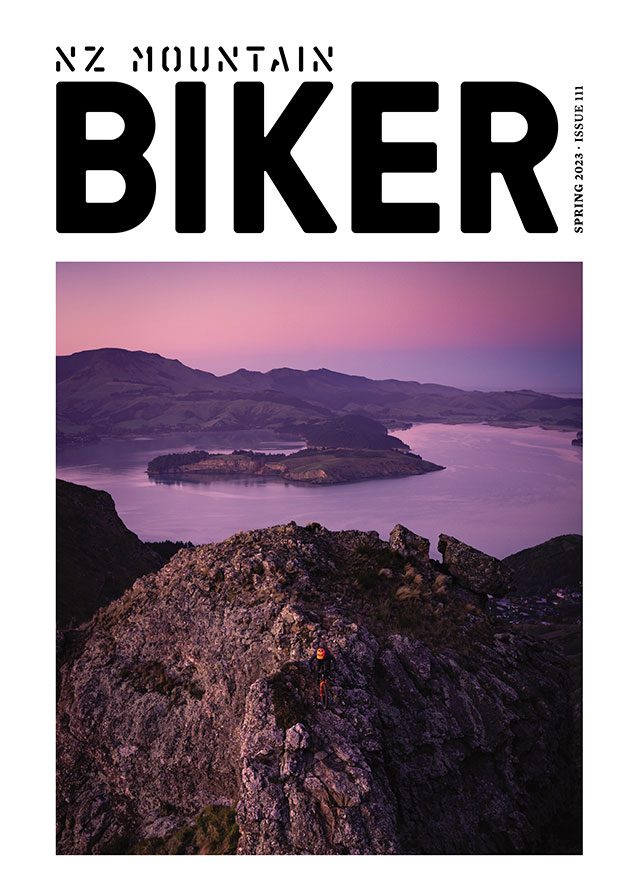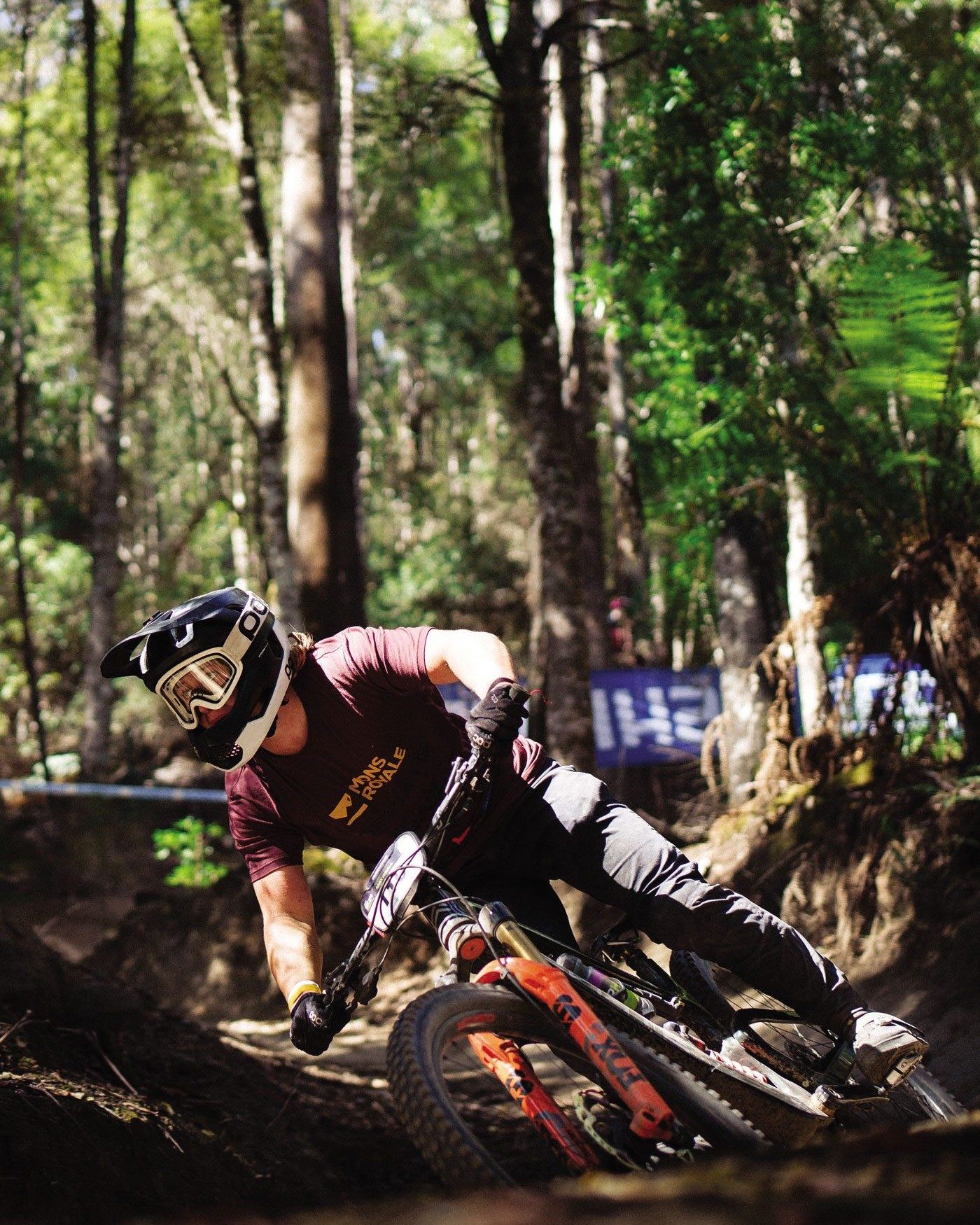Words: Lance Plibrow
Photography: Nick Waygood, Piper Albrecht and Clancy Kelly
It’s every keen young mountain biker’s fantasy: to be at the pinnacle of their sport, spending their days racing around the world; riding in exotic locations on tracks they’ve only experienced via YouTube; to have sponsors showering them with free equipment; and to be rubbing shoulders with the world’s best each weekend as they race between the tape and then celebrate their highs or lows at a local pub, drinking strange foreign beer.
But, for every kid with a dream, there are few that have the tenacity required to push through the challenges it takes to achieve this goal. Hard work beats talent, as they say, but it takes both to break into the professional ranks.
But if there is an example to look to for how hard work can indeed turn this dream into a reality, Matthew Fairbrother must be the example. With a dream to be riding in the Enduro World Series, Matthew stumbled, somewhat inadvertently, on a way to make this happen.
“I BOUGHT PLANE TICKETS, I WAS JUST HEADING OVER BY MYSELF.”
At just 17, Matthew decided he wanted to race in the EWS. A common enough dream. Already an outstanding rider by local standards, Matthew took the typical route: worked hard, saved money, and tried to get onto the circuit. Securing the necessary qualification to be able to ride at an EWS event through local qualification rounds, the first hurdle was complete. From then, it was a question of how to get to the first race in Tweed Valley, Scotland. He knew he would need a pile of money for flights and daily expenses so, as soon as he finished Year 12, it was straight to work. “I was 17, I just worked as much as I could over summer, seven days a week,” explains Matt. “But I still didn’t have enough money.”
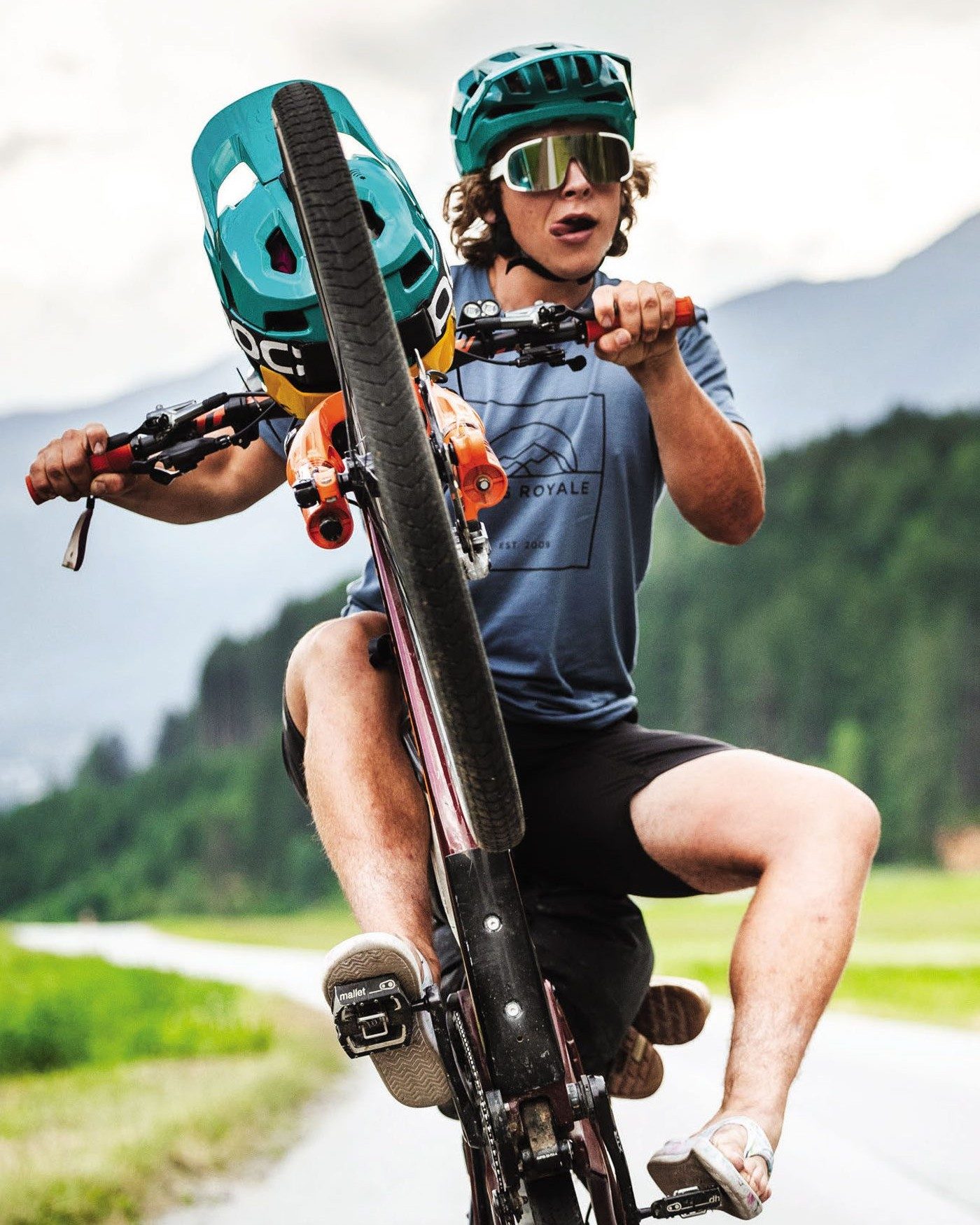
Now, the next big decision had to be made. What about the school year that was starting? It wasn’t a hard decision in Matt’s mind: “When it came time to go back to school… I just kept working. Still working six or seven days a week, sixty hours a week, trying to squeeze in biking and going to the gym around that. I was fully committed, I bought plane tickets, I was just heading over by myself. I didn’t know anyone at that point.”
Matt had been raised in a family that accepted this level of independence, and his parents didn’t stand in the way of his plans. “To be honest, I didn’t tell them much about what my plan was, because I didn’t really know myself what was going to happen. I just had a plan to get to the first race and see what happened. But I was confident in myself, and I’m naturally a pretty independent, self-reliant person, and I think they know that about me.”
The first EWS event in Scotland proved to be a fortuitous starting point. Already having some grass-roots level sponsorship through Scottish company, Deviate Bikes, he was able to foster his small connection to the company and lean on them as he landed at his first race. So, what was the plan in his head for the rest of the six month season across Europe and North America at this point? Loose. “Honestly, I just did not have a plan at all, I guess I was probably thinking there would be so many people there at Tweed Valley that would be going to the next race in Slovenia, so I was bound to be able to hook in with someone.”
But, that plan didn’t work out – for relatively human reasons. He landed in Scotland and struggled to make connections; the reality of what he was doing started to sink in. “I got to Scotland and, other than going to Australia, this was really my first time overseas on my own, and I just felt like a really small fish in a really big pond,” explains Matt. “I was actually just really overwhelmed and scared, and I didn’t seem to be able to pluck up the courage to just go up to other people around the race and talk to them.”
His plan for six months of racing was facing a reality check. But, fortune favours the brave and that’s when he had a fortunate encounter – meeting long time EWS veteran and New Zealand racer, Wyn Masters. “I bumped into Wyn Masters a few days before the race in Scotland, and he’d never heard of me but we yarned and I said, ‘I don’t know how I’m going to get to the next EWS’ and he said, ‘Why don’t you just bike there?’ He was actually joking but I was like, ‘actually yeah, that’s it, I’ll just bike there’ – totally serious. And after that I was committed, I guess.”
At this point, Matt had no idea how long the distance was between each race and how many kilo-metres he would end up riding (about 5000 by the end of the season). He didn’t even know how far it was to the next race in Slovenia, or have any idea how to get there. “I didn’t think it would be that far… but as it turns out it is, in fact, quite far. But I was committed to it and it solved my issue of transportation. For some reason it just seemed to make sense. I’m not sure how it made sense, but it just did.”
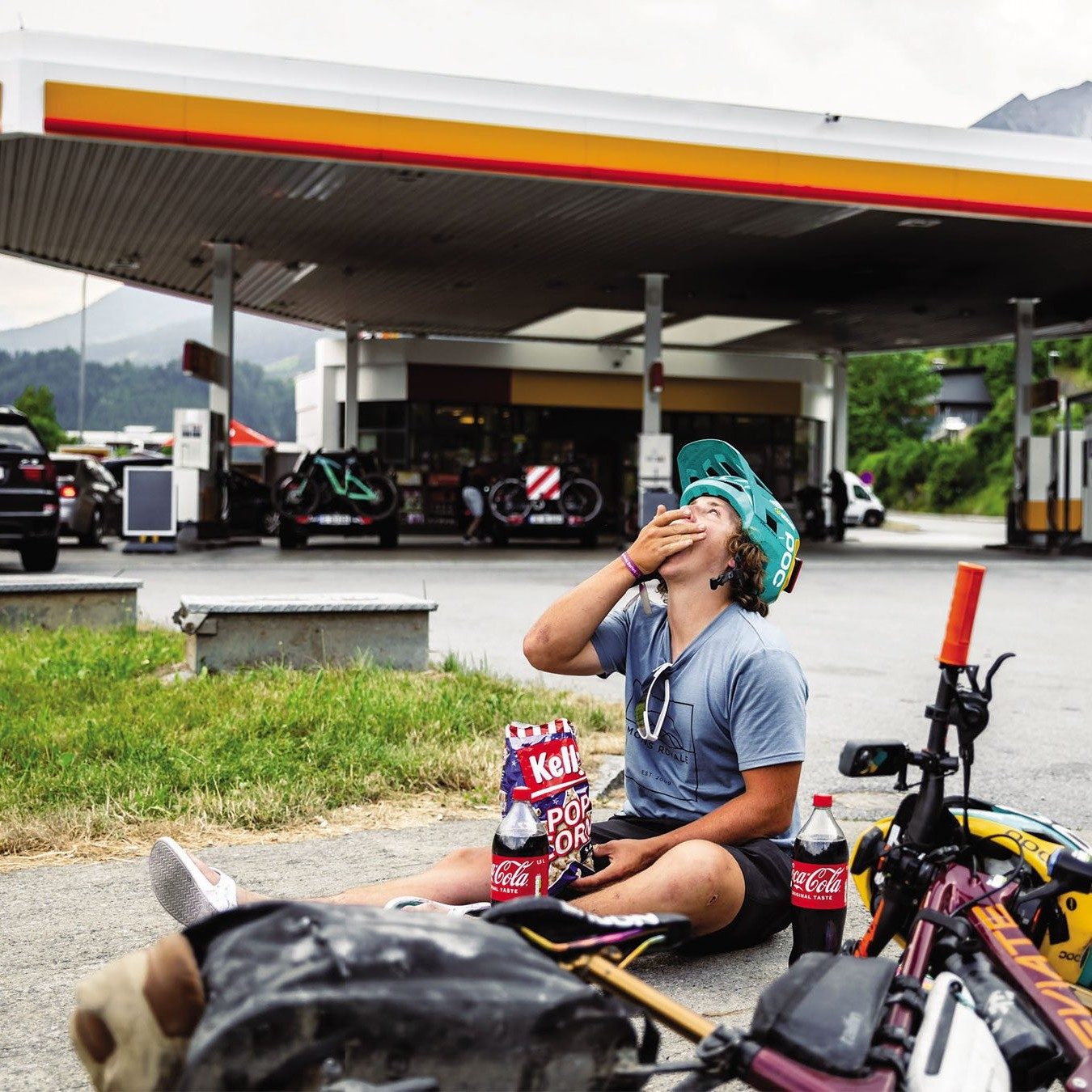
There was of course the slight problem of not being at all set up for riding across Europe. Only deciding to do this five days before he would need to begin riding, he had no bikepacking bags, so quickly jumped online to order some that would theoretically arrive in time for him to make the ride to Slovenia. However, a Queen’s Birthday long weekend meant that when they hadn’t arrived by the Friday his schedule was already in trouble. He had the Tweed Valley race that weekend to focus on as well. Fortunately, the owner of Deviate came to the rescue, driving down to Glasgow, buying some bags for him and bringing them back up. Fortunately, when he left New Zealand he had packed light. “I didn’t leave with much of a plan, but I knew that it would be harder if I had a lot of stuff. So I just brought as little gear as possible with me. I didn’t even have any non-biking shoes.” He finished the race in Tweed Valley; the owner of Deviate met him at the finish line with his bags; Wyn managed to scavenge some slick tyres off another team’s warm up bike; a quick tyre change and less than an hour after finishing his first EWS race he was pedalling to the ferryto get to the Netherlands.
Eventually arriving at the ferry, he encountered his next problem: children under 18 had to be accompanied by a parent or guardian, and they wouldn’t allow him to board the boat. “It was two in the morning in New Zealand, and the people from the boat said I needed a photo of my par- ent’s passport and to sign something saying I had permission to board the vessel. So I was calling my mum at 2:00am and I was just lucky she actually woke up.” Eventually, he was on the boat and looking forward to two things: refuelling, and relaxing in the sleeping cabin he had paid for. The boat had a buffet, so it was time to get his mon- ey’s worth and load up on calories for the ride to Slovenia. “I went to the buffet for dinner, and I just ate so, so much, as I was basically pedalling for a week after that.” But, he didn’t count on one thing – sea sickness. “After I had literally eaten as much as I could, I went up to my cabin and I was just so sea sick, I puked up all the food I had eaten. Eventually I got off the boat, feeling terrible, but I had to keep moving. So, I just started pedalling until I made it to Slovenia.”
It took six days of riding to get to Slovenia and he enjoyed two days off watching the World Cup in Leogang, but all the riding was beginning to take its toll. “At the Slovenia race…I just got demolished. I was so tired. But I was also just so stoked to be competing,” says Matt.
But the tiredness took its toll; fatigue on his body meant he was crashing more than he should have been: “I actually ended up dislocating my pinky finger in one crash – I looked down and it was just dangling out to the side. I got to a medic, and they wanted me to pull out, but I wanted to carry on, so they decided the only thing they could do was zip tie it to my other finger.” From Slovenia it was on to Italy and the round at Val Di Fassa and, if sea sickness, fatigue, and dislocating a finger were bad, here things got worse. Rain riding to the event took its toll. What might be an otherwise difficult physical task to get to the next round became mentally challenging. Too little funds to stay at camp- grounds meant that he was sleeping rough each night, using whatever he could find for shelter, to make his meagre pot of funds stretch that little bit further. He eventually arrived in Val Di Fassa and was not in a good state. He also hadn’t factored in the challenge of riding at higher altitude. “I was just shattered. And as it turns out I had COVID at the same time. I thought I was just tired from riding, but I actually had COVID. I wasn’t having much fun at the race, and I think I came 36th or something.
But, eventually, he found his groove and things got easier. Building a bit of a reputation around the pits meant people were engaging with him more. Teams would offer him food and other support. “If I ever had any issues with my bike, I would be able to go to a team and there was always someone who would help me out. I was alone, but I actually felt like I had quite a bit of support.”
And then, he bumped into Wyn again and everything changed… again. “Wyn included me in his WynTV episode, and I started getting some followers from that,” explains Matt. “Then Pinkbike picked up on me and ran a story.” Pinkbike – easily the world’s biggest mountain bike media website approached him for a story, and he was cautiously optimistic that this might help his profile. “I thought I might gain a few followers on Instagram, but didn’t think too much more about it… but then when their story came out, I gained like 10,000 followers almost literally overnight.
It just blew up. Within an hour I had 5000 followers. I had to turn off my phone for two days because it wouldn’t stop dinging.” But, amidst all this, he still had to just get on with his daily grind: getting to the next race. Fortunately, the Pinkbike exposure had boosted his marketability substantially. Deviate couldn’t have been happier, and they paid for his flights to the U.S so he could race those rounds – rounds he had previously thought would be beyond his ability to fund himself to get to.
Landing in Vancouver, he rode up the Sea to Sky highway – a reality check from the riding in Europe. “It wasn’t that far, but it was just gnarly. You’re literally fenced in, with lots of really fast highway traffic and trucks.” By this point, he was getting plenty of offers for rides from other teams – and of course there is public transport that he could have been utilising – but, by now, he had realised he’d stumbled onto his point of difference “Even with these other offers of rides, it had kind of turned into ‘I’m just biking the whole thing.’”
Arriving in Whistler, Deviate had been working in the background with SRAM to give him an unexpected surprise: Deviate were launching their new bike, the Claymore, and they had a brand new bike – decked out with all the top-end AXS and Rockshox equipment – to give to Matt, as well as a cash top-up for his riding fund. “I was absolutely blown away. Deviate had paid for my flights to Canada, and then I got given a new bike. It actually felt kinda fake. I still don’t know what to say. I couldn’t believe this was actually happening to me. It just didn’t seem real. I felt like I totally didn’t deserve it, but I was also so stoked.”
Here, he reluctantly had to jump on a plane. The 5000km from the west coast of Canada to the east coast of America was just too far. Landing in Quebec and crossing into the U.S.A proved problematic too. “They didn’t understand why I was bikepacking and why I was away for so long. They wanted to see bank statements to prove what I was doing, but I didn’t have any and I didn’t have any internet on my phone at that point and they wouldn’t let me use their internet. They were certain I was working illegally. They held me for ages, and I was a bit scared I was going to end up in jail but, after a while, they just seemed to get bored with me and let me go.”
Eventually the season came to an end. Did he enjoy himself? Absolutely. But he is also realistic about the difficulties of the experience too. “There were just massive waves of up and down. The lows are low, they really suck, and you question why you are even doing this. But the highs are so high.” At the end of the season, he had to make a decision – was he going to go do it all again? If he was, now was the time to be trying to engage more sponsors and hopefully make life that little bit easier. “I think I got on to the idea that this could actually be something. I started talking to a few companies and tried to get some sponsorship, and lots of them seemed stoked on the idea,” says Matt. “They wanted to see me do it again. I managed to get some actual funding which means I guess I’ve actually turned it into my job now, which is amazing – that was my big childhood goal.”
This season, he’s a bit smarter about the whole idea too. He’s discovered the mapping power of Komoot which takes him on much better routes than he rode the first time. “Komoot is amazing over here. It’s like Google Maps but focused on bikepacking. It takes you off the highways and takes you the scenic way. I’m off the highway as much as possible and usually in the middle of nowhere.” Which is really good because at least when he’s fatigued he’s not riding next to a highway. “Being in the middle of nowhere and tired is fine. Being fatigued and next to a highway is terrifying. I worry I’m going to lose concentration and swerve into a truck or something. Now I’m actually enjoying the riding way more. When I wake up on the morning after a race I’m looking forward to it now, when I wasn’t really before.”
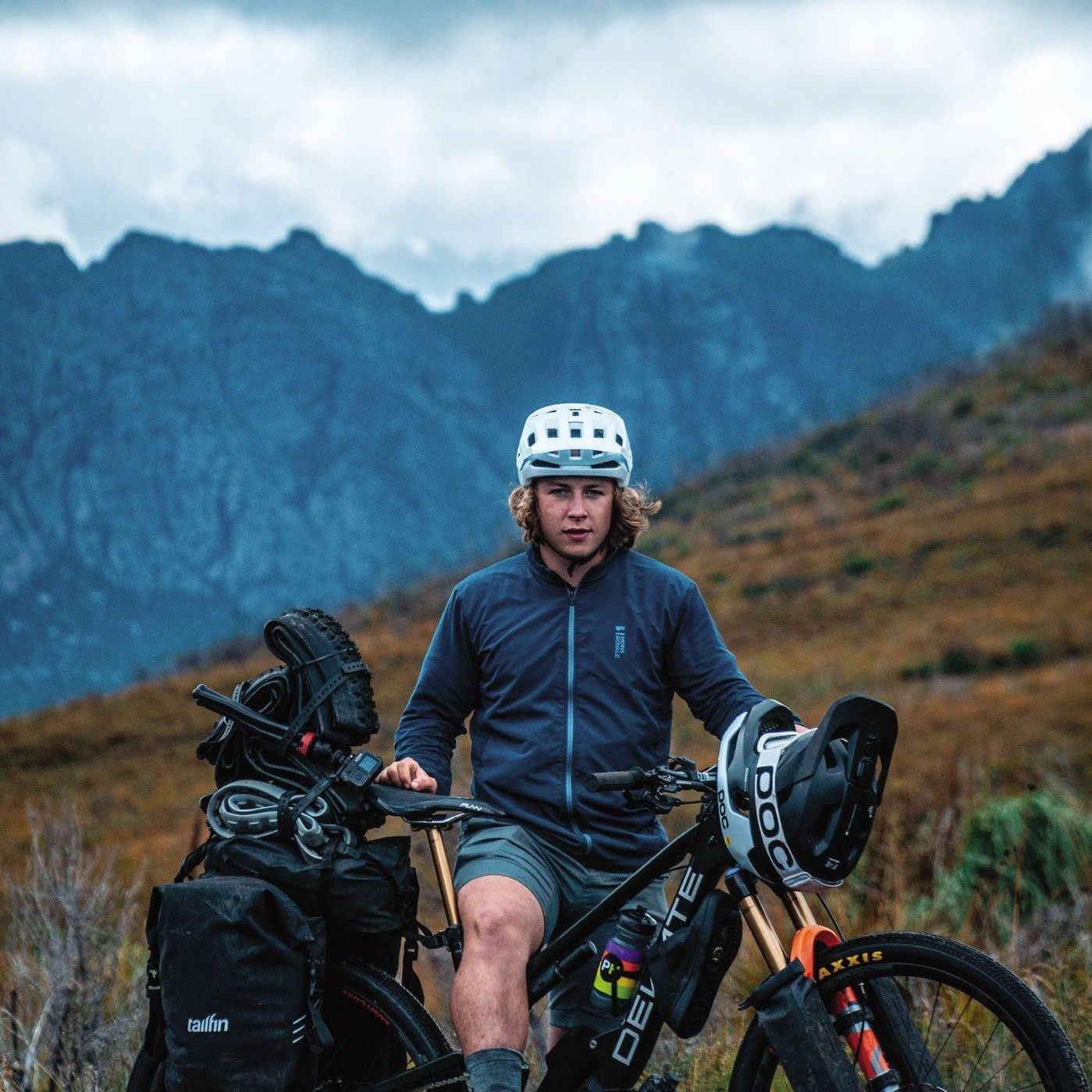
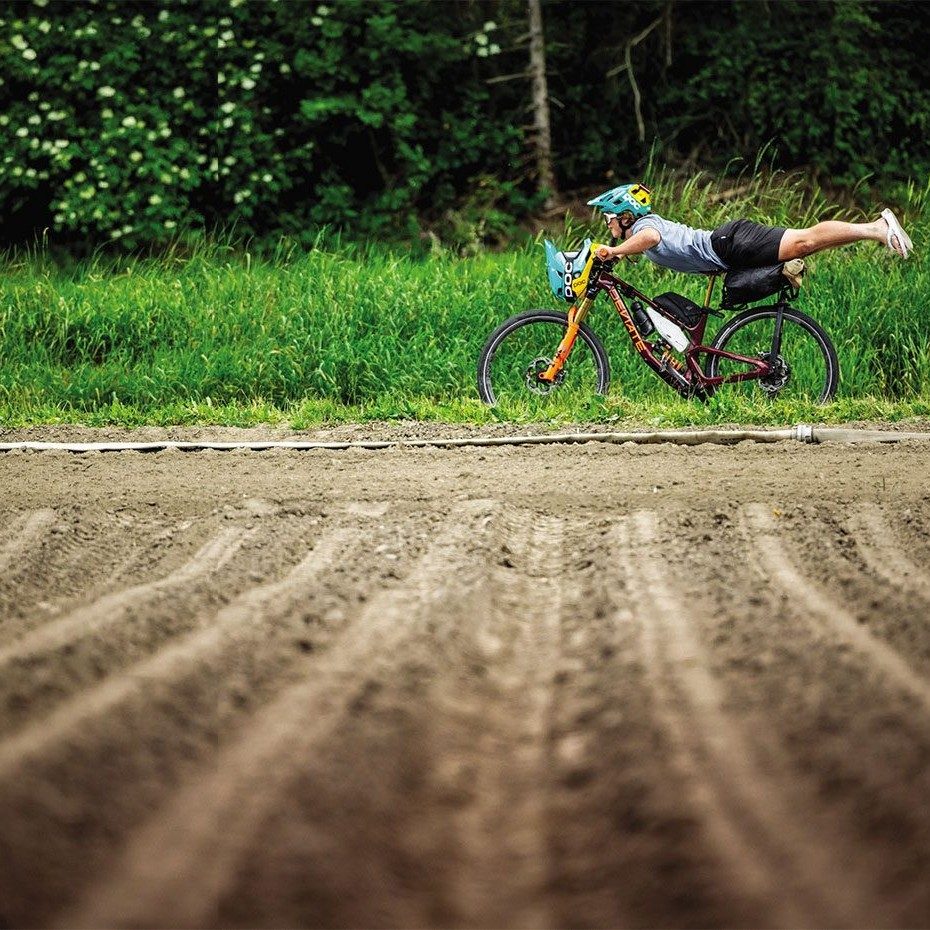
He’s tweaked his system as well, securing obvious sponsorship from Tailfin backpacking equipment. “The biggest change I’ve made is going to the Tailfin bikepacking setup. Honestly I’m so stoked on it. I was so sick of the bikepacking bags sagging and wagging around. The Tailfin has this cool pannier system so I can take so much, and it is so much more secure. I’m sponsored by them, but it is genuinely awesome stuff. I’d buy it even if I wasn’t sponsored by them.”
However, despite knowing what he was in for, securing some sponsorship and feeling more pre- pared his second year hasn’t been totally problem free. In Tasmania, he suffered the results of maybe packing too light – a few extra quick links would have solved an unfortunate broken chain affair. “At the Maydena race I snapped my chain. I had used my spare quicklink in the race, but the chain must have got a bit bent. It was 10pm and I was riding to the next event in Derby, and I stood up on the pedals and the chain snapped again – and I only had that one quicklink that I’d used earlier. I had to be at Derby the next day to sign in by 4pm, and I still had seven hours of pedalling to go. The nearest bike shop was 45km away, so I had to jog my 45kg bike 45km through the night to the bike shop – in bike shoes, of course.” A marathon in bike shoes, pushing a fully laden enduro bike? Of course.
“I GOT TO THE BIKE SHOP AND COLLAPSED AND SLEPT ON THE FRONT DOOR UNTIL THEY OPENED...”
He also entered the Highland 550 bikepacking event in Scotland, just to mix things up from the enduros he had been riding. Here, he encountered freezing weather that took its toll. “I got caught between two passes in a storm. I couldn’t set up a shelter, so I had to get to a bothy (a basic Scottish highland hut) otherwise that would be it. I was just pushing so hard against the wind to get to this hut, I ended up getting mild hypothermia and I was hallucinating. It was really quite bad.” In the end, he was on the bike for 50 hours non-stop, and with cold wet feet for a lot of it. “At that event I did some damage to my body, some days I still can’t feel my feet and my hands get pins and needles. Even now when I’m riding in the EWS, I can’t work out how hard I’m holding on to the bars, so I hold on too tight, which means I then get arm pump, then my hands blow off the bars and it all happens before I know it. So, yeah, this year I’ve been falling off a lot.” Between races he has been trying to manage the nerve damage in his hands by riding with his arms spread across the bars, so he is steering more by leaning on his forearms rather than holding with his hands. Even with Deviate offering him rides in their team van now, he is still intent on riding between each race. “I guess I just like to have a point of difference, so I’ll just keep riding this wave and see where it takes me.
I ask him if maybe he should take some time off and sort out his nerve damage which can have long lasting effects, but he doesn’t seem too bothered by it yet. And, for now, he’s still enjoying himself. There’s too much going on to worry about the challenges.
“I’m just always in the moment. There is always so much going on. It is tough, but the highs definitely outweigh the lows and there isn’t anything else I’d rather be doing right now.”
